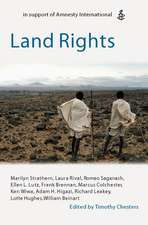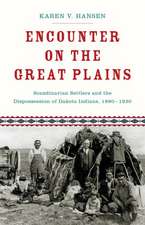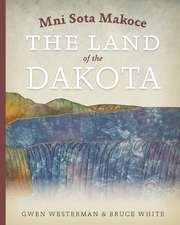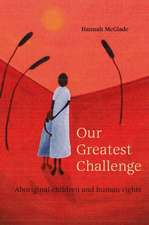Wild Men: New Narratives in American History (Paperback)
Autor Douglas Cazaux Sackmanen Limba Engleză Paperback – 30 noi 2010
Ishi was a survivor, and he viewed the bright lights of the big city with a mixture of awe and bemusement. What surprised everyone is how handily he adapted himself to the modern city while maintaining his sense of self and his culture. Kroeber was professionally trained to document Ishi's culture and his civilization. What he didn't count on was how deeply working with the man would lead him to question his own profession and his civilization--how it would rekindle a wildness of his own. Although Ishi's story has been told before in film and fiction, Wild Men is the first book to focus on the depth of Ishi and Kroeber's friendship. Exploring what their intertwined stories tell us about Indian survival in modern America and about America's fascination with the wild, this text is an ideal supplement for courses on Native American history, the U.S. West, and the history of California.
| Toate formatele și edițiile | Preț | Express |
|---|---|---|
| Paperback (1) | 161.23 lei 6-8 săpt. | |
| Oxford University Press – 30 noi 2010 | 161.23 lei 6-8 săpt. | |
| Hardback (1) | 194.21 lei 31-37 zile | |
| Oxford University Press – 14 ian 2010 | 194.21 lei 31-37 zile |
Preț: 161.23 lei
Nou
Puncte Express: 242
Preț estimativ în valută:
30.85€ • 33.62$ • 25.100£
30.85€ • 33.62$ • 25.100£
Carte tipărită la comandă
Livrare economică 23 aprilie-07 mai
Preluare comenzi: 021 569.72.76
Specificații
ISBN-13: 9780195178531
ISBN-10: 019517853X
Pagini: 365
Ilustrații: 25 black and white halftones, 5 line illustrations
Dimensiuni: 137 x 203 x 23 mm
Greutate: 0.5 kg
Ediția:0007
Editura: Oxford University Press
Seria New Narratives in American History (Paperback)
Locul publicării:New York, United States
ISBN-10: 019517853X
Pagini: 365
Ilustrații: 25 black and white halftones, 5 line illustrations
Dimensiuni: 137 x 203 x 23 mm
Greutate: 0.5 kg
Ediția:0007
Editura: Oxford University Press
Seria New Narratives in American History (Paperback)
Locul publicării:New York, United States
Descriere
In late August of 1911, from deep within the shadows of a remote canyon in northern California, an Indian of the Yahi people, long-believed to have disappeared, suddenly showed himself. A fugitive, he had hidden for decades from the lethal gaze of white intruders, keeping fires small and wiping the earth clean of his footprints. The sheriff took him into custody, and, having no better place for him, put him in the cell reserved for those who were not quite right in the head-theinsane. The man soon aroused local and then national curiosity, and was christened the Wild Man or Wild Indian. Alfred Kroeber, who would become one of the most famous anthropologists of his day, caught wind of the miraculous appearance of what he saw as a genuine Stone Age man "uncontaminated bycivilization." Sackman's book, the sixth in Davidson and Stoff's "New Narratives" series, explores the issues surrounding the appearance of Ishi and his relationship with Kroeber. The myth woven about Ishi was a simple but powerful one-and one made to order for the day. Ishi came to embody the true primitive, at a time when many Americans were lamenting the demise of wilderness and Indians (who, for better and for worse, had always been closely linked to wilderness in national mythology from the beginning). Now, with urban America on the ascent, the worlds of wilderness and Indians seemed to be disappearing. While that was celebrated as a triumph, it was also lamentedas a loss. Perceived by many city dwellers as utterly different, Ishi was nonetheless felt to represent something they had lost. Ishi was an instant celebrity. The public turned out in droves to see Ishi make arrows and start fires. Indeed, everyone seemed fascinated by the city's new immigrant: journalists and showmen, society ladies and suffragettes, Boy Scouts and nature-lovers, and anthropologists too. Alfred Kroeber befriended Ishi, and brought him to live at the Smithsonian. In the end, Kroeber was profoundly moved by Ishi, so much so that when his informant-become-friend died just five years after his arrival inSan Francisco, Kroeber said, "say for me that science can go to hell." The phrase was conveyed in a telegram from New York, where Kroeber was visiting as Ishi succumbed to tuberculosis. He was trying to prevent an autopsy, but one was performed anyway. Ishi's brain was preserved in a glass jar(which was finally "repatriated" from the Smithsonian to the Pit River and Redding Rancheria Indians for reburial in August of 2000). Kroeber was shattered by the loss of his friend, and soon thereafter he went through psychoanalysis, took a leave of his position, and nearly gave up on anthropology altogether. The story of Ishi and Kroeber's relationship will allow the book to explore a set of interrelated topics, including the post-Gold Rush transformations of California and the West, the dispossession of Indians and native-white relations before and after the closing of the frontier, the impact of San Francisco ("nature's metropolis" of the Far West) on nature and people, and Americans' ambivalent embrace of modernity. Because the narrative of Ishi and Kroeber so literally moves through theplaces that reflect these themes (the Sierras, San Francisco, the anthropological museum, even Buffalo Bill's Wild West Show, which Ishi attended as a spectator), it is an especially promising way to tie them together.

















